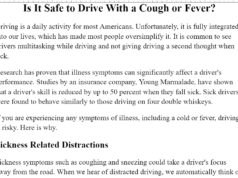SPONSORED CONTENT
By Mark Sherman, an attorney who focuses in criminal litigation involving juveniles. He has 19 years of experience and is licensed to practice in Connecticut, New York and Florida.
Members of the D.C. police department are alarmed by a recent uptick in violent crime by juveniles in the area. According to the D.C. Office of the Attorney General, the number of juveniles being arrested for violent crimes has gone up 35 percent over the last fiscal year. Attorney General Karl Racine is worried about this recent trend and believes that “it’s creating havoc” within the city and is making people feel less safe when they step outside their front doors.
Local law enforcement, the attorney general’s office, and federal prosecutors are working to reverse the growing trend of juvenile crime and are focusing more of their efforts on prosecuting these kinds of cases. However, when taking a good look at enforcement practices, one will discover that current methods are easily penetrable, somewhat arbitrary, and are heavily reliant on federal control.
While the efforts being made to curb juvenile violence are noble, they are much less secure than D.C. residents would like them to be. For example, too many convicted felons either have their sentences reduced or are released into the world without the proper support needed to keep them from recommitting the same offense. The lack of infrastructure required to support released convicts is a major problem that both local and federal governments need to address if they are looking to lower juvenile crime rates.
The amount of control that federal prosecutors have over juvenile crime cases is also important to note when thinking about the problem of rising juvenile crime. Federal prosecutors with the U.S. Attorney for the District of Columbia take the most violent juvenile offenders and prosecute them as adults in a court of law. Allowing the federal government to pick certain juveniles based on an arbitrary list of contributory factors is something that could be streamlined by including the input of the Attorney General who is chosen by the D.C. electorate.
The problem with this is that the Attorney General does not have the power to prosecute defendants in Superior Court and cannot sentence convicted individuals to jail. The highest punishment handed out in juvenile court is a lengthy stay in a DYRS facility or group home. Until the Attorney General has the power to put convicted juveniles away, federal prosecutors are still the best option for reducing the juvenile crime rate, even though they have a history of targeting and jailing minority juveniles at a higher rate than the rest of the population.
Another issue is the lack of funding and support for diversionary programs aimed at helping juveniles who have committed non-violent and lesser violent crimes. General Racine is pleased with the progress he and his team have made, citing statistics showing that over 90 percent of juveniles who have entered these programs go on to be productive citizens and are not rearrested. While ten percent of juveniles getting rearrested is not an insignificant number, it would be wise to allocate more funds towards the success of these diversionary programs that help give a large number of minority juveniles a way out of the school-to-prison pipeline.














